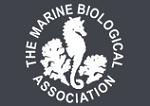APHOTOMARINE
An educational resource dedicated mainly to the photography
and diversity of marine life that can be found in coastal waters
and intertidal areas of Great Britain and Ireland by David Fenwick.

Aglaophenia pluma
- hydroid 1
Aglaopheniid hydroid
Aglaophenia pluma
- hydroid 2
Aglaopheniid hydroid
Aglaophenia pluma
- with 0.1mm division rule 1
Aglaopheniid hydroid
Aglaophenia pluma
- with 0.1mm division rule 2
Aglaopheniid hydroid
Aglaophenia pluma
- hydrothecae 1
Aglaopheniid hydroid
Aglaophenia pluma
- hydrotheca 1
Specimen above washed-up with Eelgrass, Zostera marina, during a storm at Chyandour Rocks, Penzance, Cornwall, 02.02.17.
Aglaopheniid hydroid
Aglaophenia pluma
- with gonothecae 1
Aglaopheniid hydroid
Aglaophenia pluma
- gonotheca 1
Aglaopheniid hydroid
Aglaophenia pluma
- gonotheca 2
Aglaophenia pluma seen above was found growing epithytically on the brown algae Halidrys siliquosa at Newlyn Harbour, Newlyn, Cornwall. 01.09.15.
Aglaopheniid hydroid
Aglaophenia pluma
- in water 1
Aglaopheniid hydroid
Aglaophenia pluma
- in water 2
Aglaopheniid hydroid
Aglaophenia pluma
- in water 3
Aglaopheniid hydroid
Aglaophenia pluma
- out of water 1
Aglaopheniid hydroid
Aglaophenia pluma
- out of water 2
Aglaopheniid hydroid
Aglaophenia pluma
- out of water 3
Aglaopheniid hydroid
Aglaophenia pluma
- on Halidrys siliquosa 1
Aglaopheniid hydroid
Aglaophenia pluma
- on Halidrys siliquosa 2
Aglaopheniid hydroid
Aglaophenia pluma
- on Halidrys siliquosa 3
Aglaopheniid hydroid
Aglaophenia pluma
- on Halidrys siliquosa 4
This hydroid was found on the seaweed Halidrys siliquosa, Sea oak, but can be also found on rocks or shells; usually below the low tide level. Can be found on this weed on beaches after storms.
Images taken on the lowershore on the brown seaweed, Halidrys siliquosa, Sea oak, at Porthpean near St. Austell, 01.04.10; at Long Rock, near Penzance, Cornwall. 27.10.11; and at Wherry Rocks, Wherrytown, Penzance, Cornwall. 08.03.12.
APHOTOMARINE supports open source data recording and sharing for the benefit of wildlife, recorders, research, science and education. The project recommends the following websites and works with the following bodies and organisations.
The Marine Biological Association or MBA, based in Plymouth, is one of the world’s longest-running societies dedicated to promoting research into our oceans and the life they support. Since 1884 the MBA has been providing a unified, clear, independent voice on behalf of the marine biological community.It has a growing membership in over 40 countries.
The National Biodiversity Network or NBN is a charity that supports open source data sharing and recording supporting conservation, science and education. "Why do recorders need open source?". Simply because it supports the core values of wildlife recording and the free use of records and data over a very wide network that includes partners like the Natural History Museum.
The taxonomy used here is based on that of the following database, which is also used by the MBA, NHM and the NBN.
The World Register of Marine Species or WoRMS.

